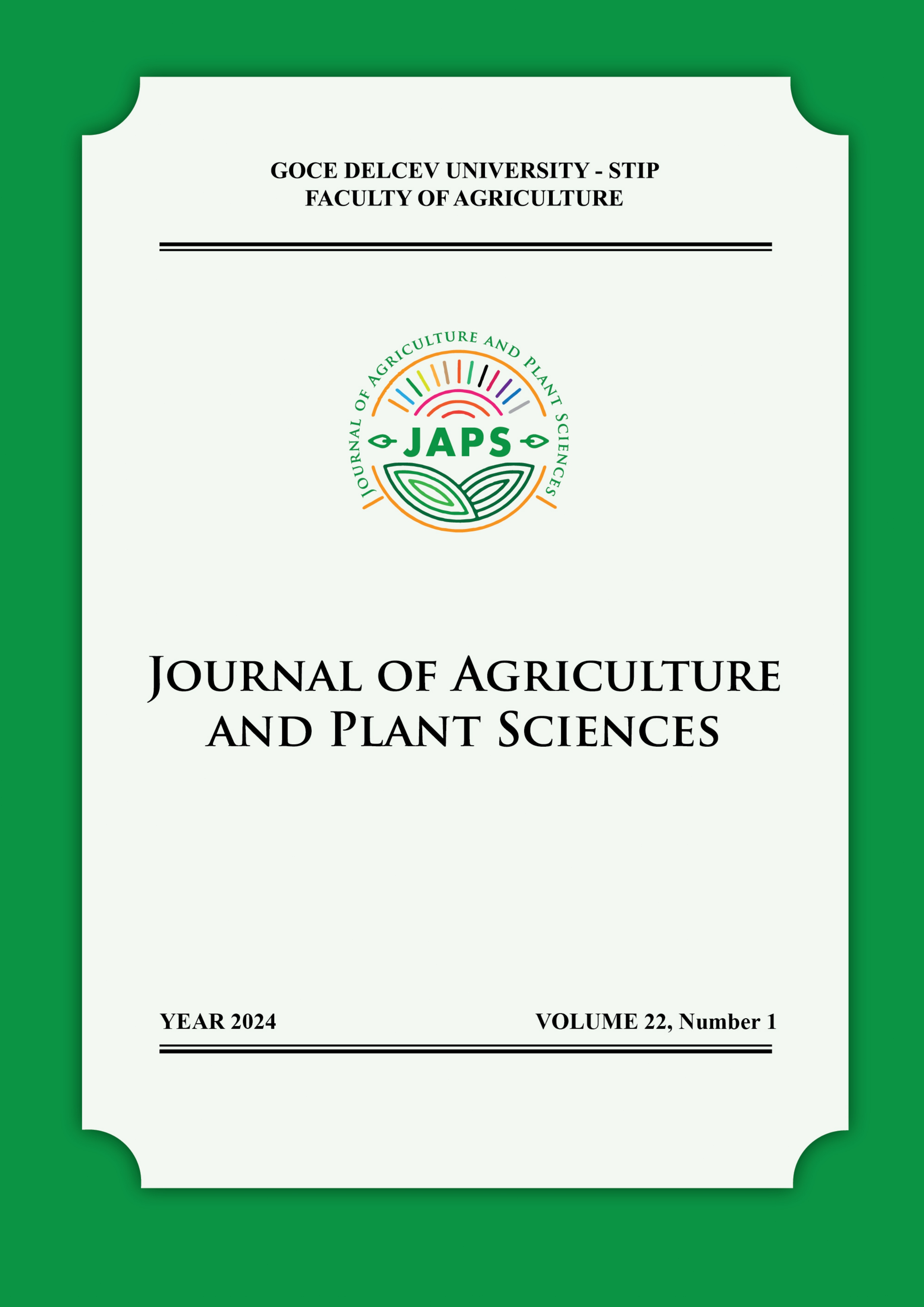INTRODUCTION AND DETERMINATION OF NEW TOMATO HYBRIDS
DOI:
https://doi.org/10.46763/JAPS24221041tAbstract
The determination of the organoleptic characteristics in tomato Lycopersicon esculentum Mill. is a significant part in the basic needs and requirements of the market, but also in increasing the export potential. The aim of the research is the selection of new red tomato hybrids Lycopersicon esculentum Mill. According to their organoleptic, morphological and sensory characteristics, for possible commercialization. In the research, 23 coded new indeterminate hybrids of red tomato were analyzed and compared with 5 already present commercial hybrids (Brave F1, Adriatik F1, Matissimo F1, Alamina RZ F1, Signora F1). The tomato was produced from seedlings by a registered nursery grower Agro Koni, and it was planted in sheltered areas at a grower in Tirana, R. Albania. The properties that were examined: type of tomato (1 late / 5 early), plant strength (1 weak / 5 strong), length of internodes (1 long / 5 short), fruit quality (1 bad / 5 excellent), size of fruit (1 small/ 5 large), as well as fruit color, fertility potential (yield), as well as overall evaluation of the plants in a rank from 1 (bad) to 5 (excellent). The relationships between analyzed properties, descriptive and the variance's analysis provided an insight into those hybrids that satisfy the methodological requirements. Based on the results and determination of new hybrids with improved properties from the existing ones, the needs of the market and consumers are influenced. According to the genetic potential and phenotypic characteristics, 3 new hybrids (TME221276, TME220244 and TME220245) were determined, which satisfied the examined criteria, thus giving the opportunity to be included in the cluster of commercial hybrids on the market.
Downloads
Published
Issue
Section
License
The intellectual property and copyright on the original content of all scientific contributions in the published paper shall remain with the authors. Authors give permission to the JAPS owner to publish the paper. All authors agree to publish the paper under Attribution-NonCommercial-NoDerivatives 4.0 International license (CC BY-NC-ND 4.0).

